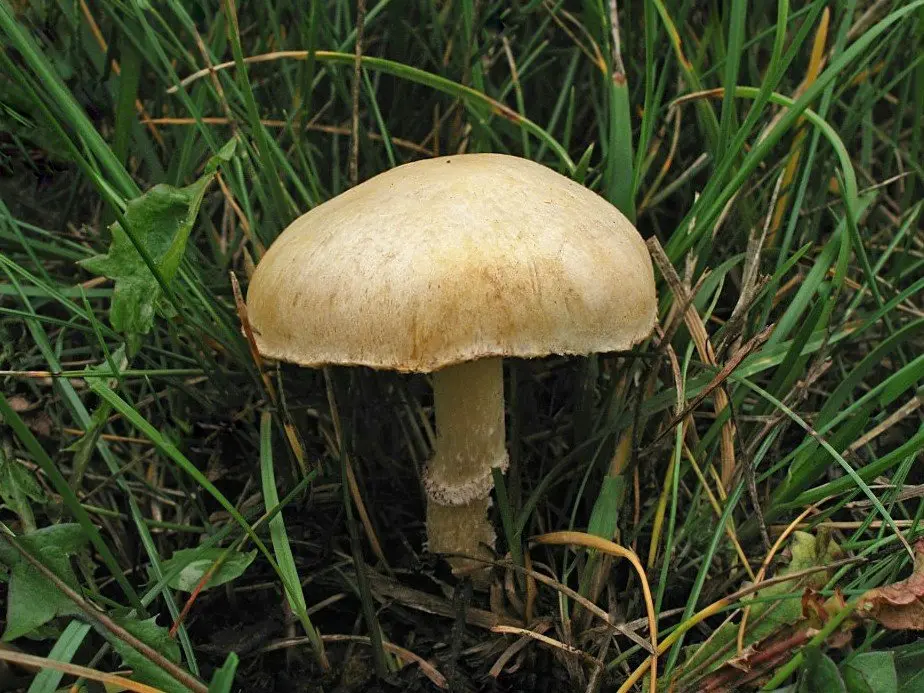Stropharia crowned (Psilocybe crown)
- Division: Basidiomycota (Basidiomycetes)
- Subdivision: Agaricomycotina (Agaricomycetes)
- Class: Agaricomycetes (Agaricomycetes)
- Subclass: Agaricomycetidae (Agaricomycetes)
- Order: Agaricales (Agaric or Lamellar)
- Family: Hymenogastraceae (Hymenogaster)
- Genus: Psilocybe
- Type: Psilocybe coronilla (Stropharia crown)
- Stropharia blocked
- Agaricus coronillus

Hat:
in a young mushroom, the cap has a conical shape, then straightens and becomes prostrate. The surface of the cap is smooth. Sometimes it is covered with small scales. The hat is hollow inside. The edges of the cap are bordered by flaky scraps of the bedspread. The cap diameter is from 2 to 8 centimeters. The surface of the cap can take on all shades of yellow, starting from light yellow and ending with lemon. Sometimes the hat is colored unevenly. Lighter on the edges. In wet weather, the skin of the cap becomes oily.
Leg:
cylindrical stem, slightly tapering towards the base. At first, the leg is solid inside, then it becomes hollow. The leg is distinguished by characteristic root processes that go into the soil. On the stem there is a small, early disappearing purple ring from ripe, shedding spores.
Records:
not frequent, unevenly adhering to the leg with a tooth or tightly. In young mushrooms, the plates are pale lilac in color, then they become dark, purple or brown.
Variability:
The mushroom is distinguished by variability in the color of the cap (from light yellow to bright lemon) and variability in the color of the plates (from light lilac in young mushrooms to blackish brown in mature mushrooms).
Spread:
There is Stropharia crowned in meadows and pastures. Prefers manure and sandy soils. Can grow on plains and low hills. Grows in small groups, rather scattered. Never forms large clusters. More often it grows singly or two or three mushrooms in a splice. The fruiting period is from summer to late autumn.
Spore Powder:
purple-brown or dark purple.
Pulp:
the flesh in both the stem and the cap is dense, whitish in color. The mushroom has a rare smell. Some sources claim that the mushroom smells good.
Edibility:
there is conflicting information about the edibility of crowned stropharia. Some sources indicate that the mushroom is conditionally edible, while others indicate that it is inedible. There is also information that the mushroom is possibly poisonous. Therefore, most likely, it is not worth eating it.
Similarity:
bears resemblance to other inedible small Stropharia.









